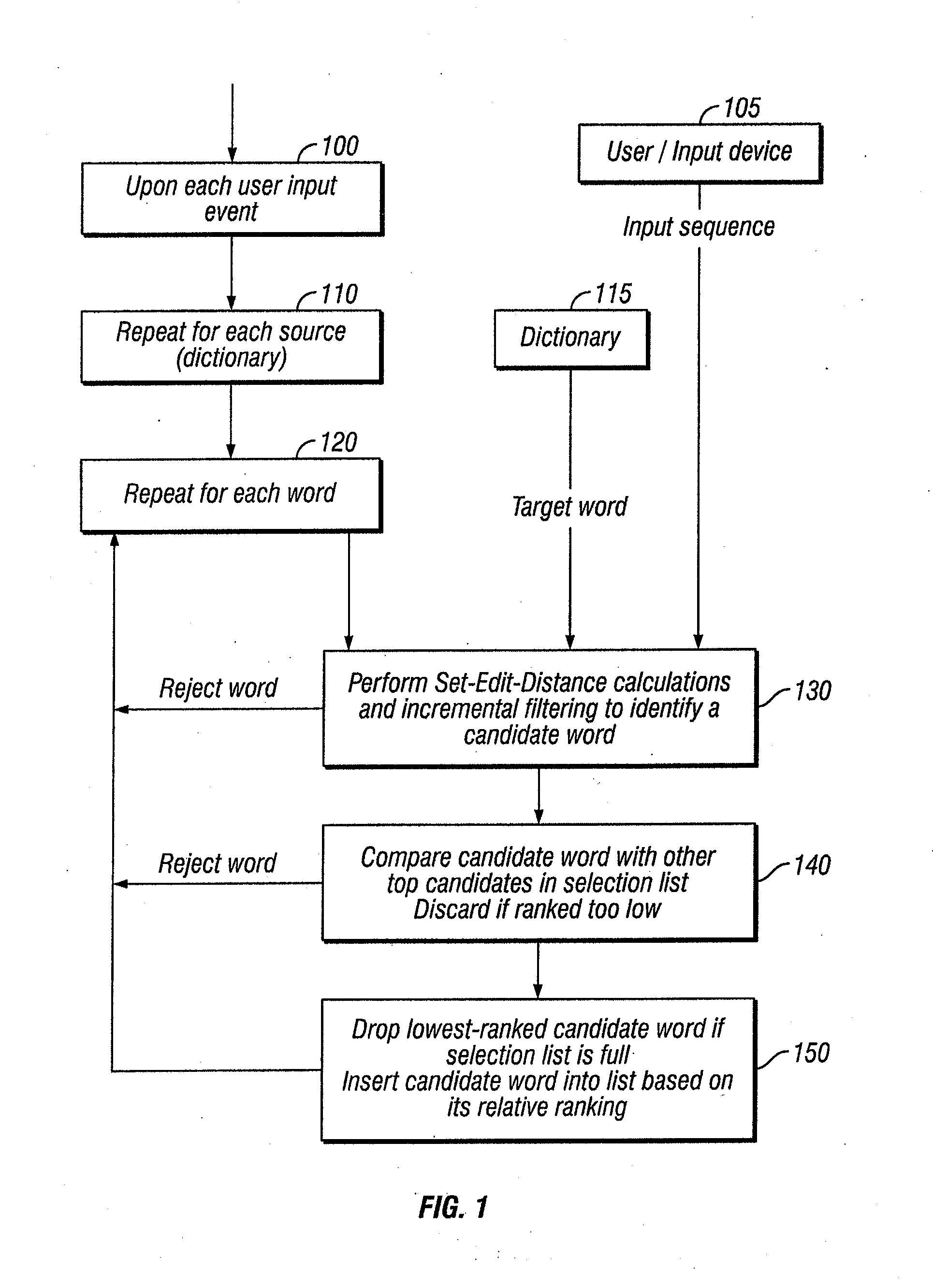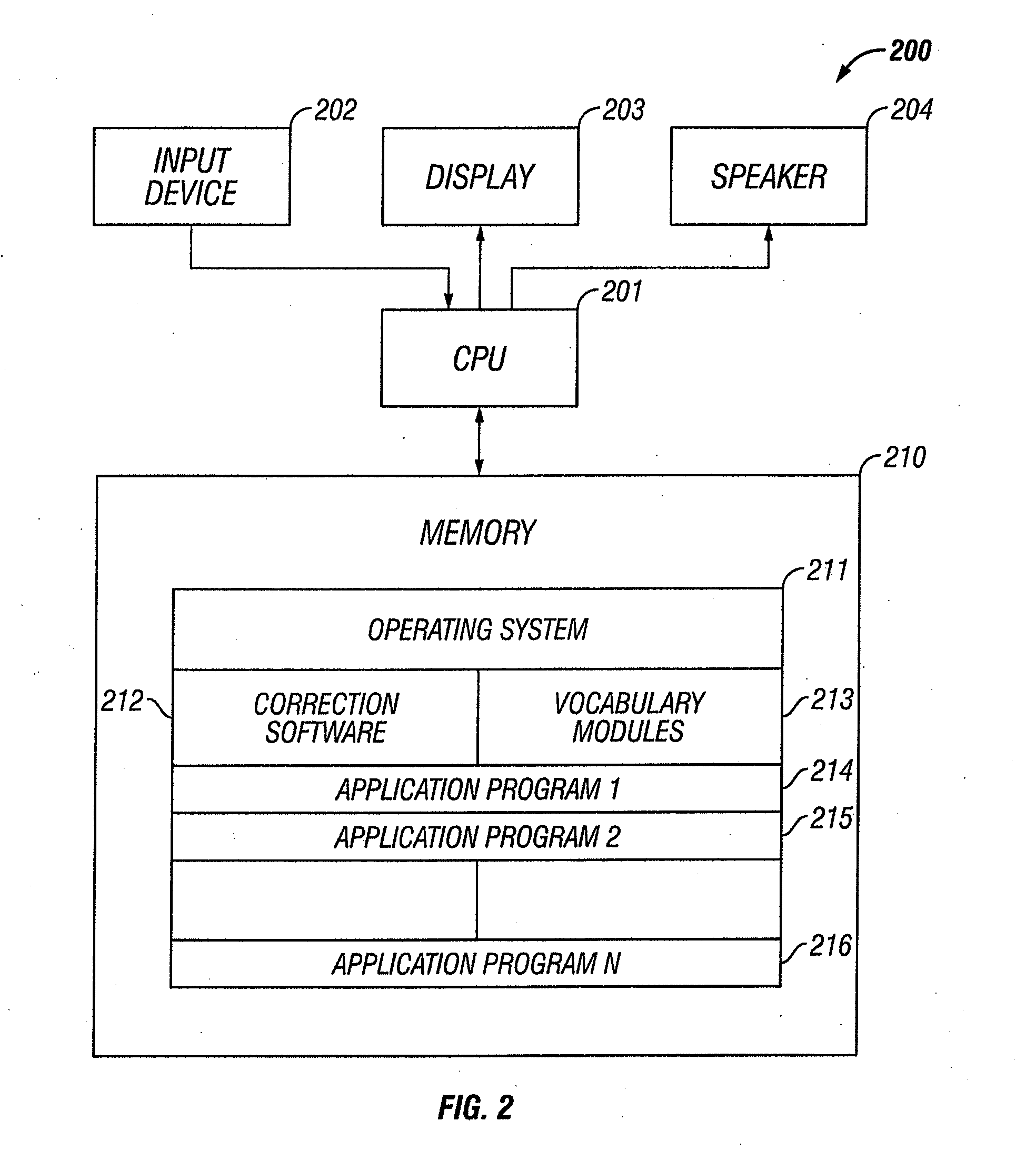Spell-check for a keyboard system with automatic correction
a keyboard system and automatic correction technology, applied in the field of data input devices, can solve the problems of spell-check algorithms, typing almost every letter wrong, and only a certain number of differences between the typed word and the intended correct word
- Summary
- Abstract
- Description
- Claims
- Application Information
AI Technical Summary
Benefits of technology
Problems solved by technology
Method used
Image
Examples
specific example
To further illustrate the sequence 2400, this following specific example is given. In step 2402 the system 200 displays the soft keyboard 1700 depicted in FIG. 17. In step 2404 the system 200 receives the user's trace, which is shown by reference 1706 in FIG. 17. In step 2406, the system defines the user's input sequence. Here, the trace directly contacts keys P, O, I, U, Y, T, R, E, R, T, and Y. The total input sequence, including these keys and their auxiliaries include the following:
(1) PO: primary keys including a contacted starting key P, plus auxiliary O because it satisfies the rectangular probability approach and satisfies a preference for keys along the direction of trace movement.
(2) OIUYTR: secondary, intervening keys O, I, U, Y, T, and R, with no auxiliaries due to the speed or direction of trace.
(3) EWR: primary keys including contacted direction changing key E, plus W and R because they are auxiliaries to E.
(4) RT: secondary, intervening keys R and T with no auxiliarie...
PUM
 Login to View More
Login to View More Abstract
Description
Claims
Application Information
 Login to View More
Login to View More - R&D
- Intellectual Property
- Life Sciences
- Materials
- Tech Scout
- Unparalleled Data Quality
- Higher Quality Content
- 60% Fewer Hallucinations
Browse by: Latest US Patents, China's latest patents, Technical Efficacy Thesaurus, Application Domain, Technology Topic, Popular Technical Reports.
© 2025 PatSnap. All rights reserved.Legal|Privacy policy|Modern Slavery Act Transparency Statement|Sitemap|About US| Contact US: help@patsnap.com



